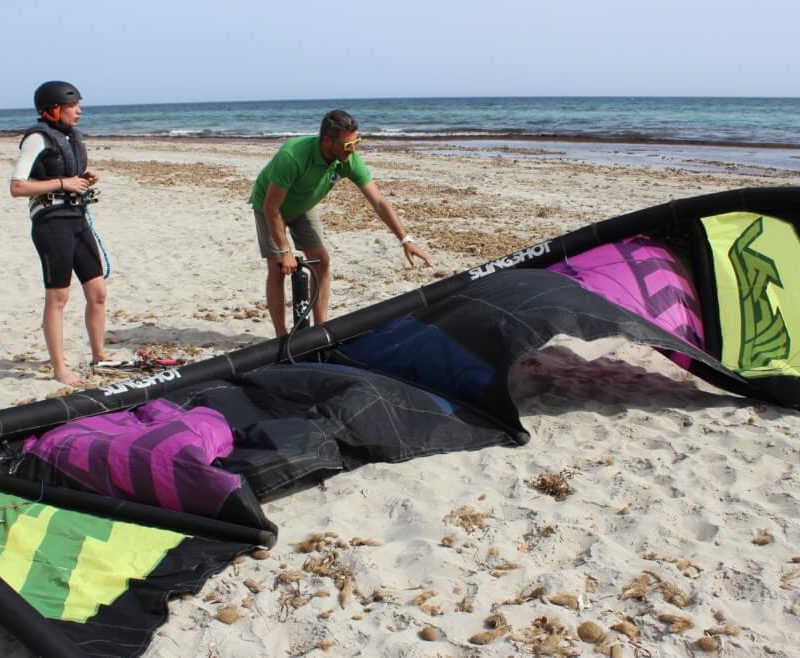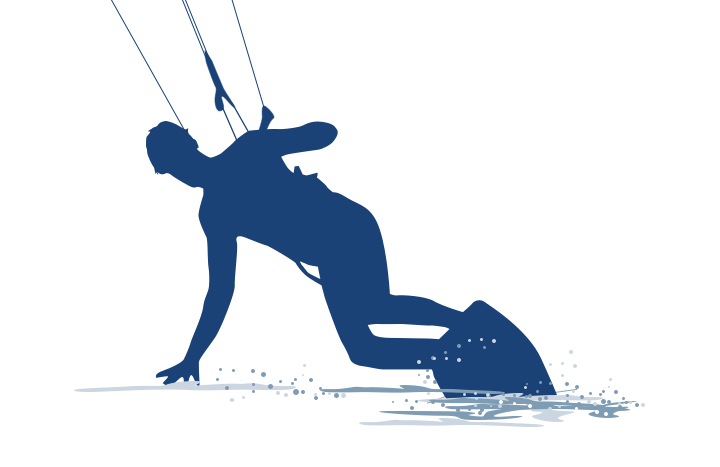Today I will tell you about some very useful techniques to keep your equipment in good condition and preserve it, as far as possible, from a quick wear and tear. This is the first of a series of “Kitesurfing tips”: today I will help you to understand the status of your equipment and therefore to recognize when it is time to replace it, completely or partially.
First of all, the most important rule: in order to keep the kite in good condition, NEVER leave the kite inflated on the beach in direct sunlight, waving on the wind, if you are not using it. In fact, especially in summer, with high temperatures the kite canopy wears out quickly and you risk to shorten the life of your wing.
The second fundamental rule: to keep your equipment in good condition, you must rinse everything you have used in the sea (bar, harness, wetsuit, board, etc.) with fresh water after each session. The kite is the only exception to this rule.
Indeed, there are several schools of thought on this topic. Some experts argue that every now and then you have to rinse the kite too; others, including myself, usually wash the kite very few times with fresh water, this is because when the kites are assembled they are treated with a substance that protects them from salt water! In my experience, I only rinsed the kite when it once fell into very bad condition (sand and mud). I never had any problem doing so, this allowed my kites to last several years.
As you will have understood, the heat is not good for the kite, so avoid leaving it in the car under 40°C: the valves of the bladder or those of the leading edge, which are glued, can easily detach and unstick because of the heat. Practically, you could find yourself on the beach with a damaged kite and be forced to say goodbye to your kite trip. Also for this reason, always check all your equipment before each trip, in this way you will avoid ruining a good kitesurfing session, since you obviously don’t want to compromise your safety in the sea.
In this regard, in fact, a very important thing that I want to suggest to you, especially about safety, is to always check the state of wear of the top of your depower bar. This element is in fact subjected to continuous stress and therefore it wears and tears easily, however if you have a bar with a plastic depower the problem does not exist.
Always remember to check also the screws of the pads of your board, because they usually loosen and unscrew easily throughout the navigation. I happened to be in the water with a pad unscrewed and I had to go back and tighten it then. It’s not dangerous, but you waste your time and when you’re in the water it can be annoying.
If you deflate the kite in the water for some reason, do not allow water to enter the leading edge bladder for any reason. In fact, if by chance there is water inside, as soon as you inflate the kite, bubbles will form and your kite may explode: it would be a tragedy!
In conclusion, as you will have well understood, you must always take care of your equipment and always check everything in detail, firstly for your safety but also to avoid being forced to stay on the beach watching other people kitesurfing because you have a problem and you cannot go out.
Until next time and …
Aloha WindBuster!



